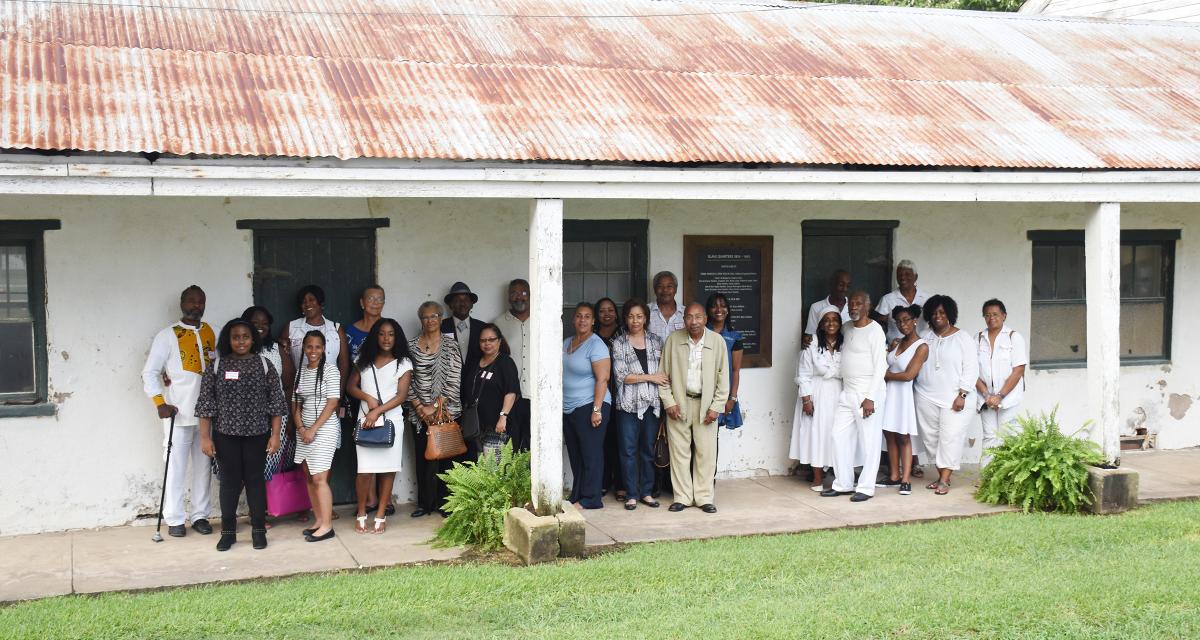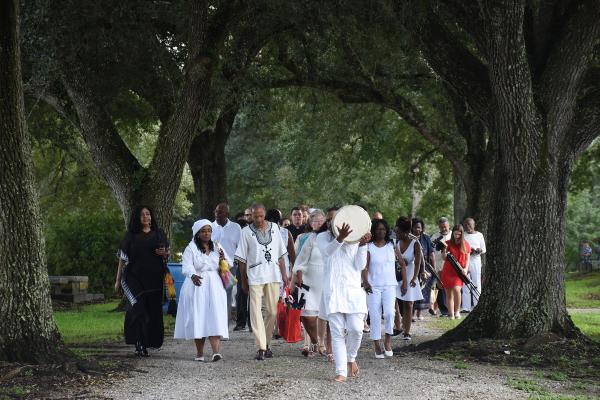The Society of the Sacred Heart, United States – Canada Province continues to work humbly to acknowledge our history with enslavement, to build relationships with the descendants of our enslaved persons, and to work with the descendants towards racial equity and the end to systemic racism in our institutional structures. (Provincial Sheila Hammond, RSCJ, on Juneteenth and the Feast of the Sacred Heart, June 19, 2020)
The Committee on Slavery, Accountability and Reconciliation
While the sad reality of the Society’s enslaving people in the United States has not been hidden, neither has this history been generally known. Acknowledging our participation in the structural sin of racism publicly became an element to mark the occasion of the Society’s presence in North America for 200 years. (Provincial Sheila Hammond, RSCJ, Welcome | Grand Coteau Gathering September 2018)
In the fall of 2016, the provincial team constituted a committee with the mandate to focus on the Society’s role in racism and the enslavement of people. “We sought to engage in deeper research with a view to telling the fuller story. We knew that this would mean both confronting a painful part of our legacy and committing to truth, healing and reconciliation for a better future,” explained Carolyn Osiek, RSCJ, chair of the Committee on Slavery, Accountability and Reconciliation. The Committee on Slavery, Accountability and Reconciliation included Maureen Chicoine, RSCJ; Irma Dillard, RSCJ; Marilyn McMorrow, RSCJ; Catherine Mooney; Carolyn Osiek, RSCJ (chair); and Emory Webre.
The Mandate
“To focus on the on-going issue of racism in the world and the Society of the Sacred Heart’s participation in the historic sin of slavery. …we commit ourselves to recover the story of slavery in our early days in this country, to share this historical fact as widely as needed, to assist in the attempt to locate the descendants of enslaved persons who lived on property owned by the Society of the Sacred Heart, and to take appropriate steps to address this painful chapter in our history while also working to help transform on-going racist attitudes and behaviors.”
From the beginning, both the provincial team and the committee understood that this work was essential to moving the conversation about slavery and racism forward to effect change within the Society itself and in the wider Sacred Heart family today. The hope remains that this work can be a positive contribution to the larger conversation around race and social justice in the world we live in today.
Genealogical research: Identifying descendants of enslaved persons
We knew that the Society enslaved persons in Grand Coteau, Louisiana; Natchitoches, Louisiana; Convent, Louisiana; and St. Louis and Florissant, Missouri; however, the committee wanted to know in greater depth the specific history of the people who had been enslaved.
Sister Chicoine launched the necessary genealogy research to identify descendants of the enslaved persons once owned by the Society. She and Sister Dillard met with descendants to learn from them their stories, their hopes and their requests of RSCJ.
Claiming the truth of our past
Most of the historical information found to date is from Grand Coteau. The Society’s founders of Grand Coteau, Mother Eugénie Audé and Sister Mary Layton, arrived in 1821 and started a school. The first enslaved persons on the property may have been loaned to the founders by nearby Catholic families who had daughters in the school. Mrs. Charles Smith, the donor of the school property, had promised an enslaved family to the convent, although the committee has not found a record of who they were. The research reveals that Mrs. Smith enslaved 25 persons in 1820, so some of the earliest enslaved persons on the property may have come from her. The school property was surrounded by plantations owned by settlers with roots in Maryland. When the Jesuits founded a school in the same town in 1838, the Jesuits and the Society of the Sacred Heart shared enslaved persons between the schools and property.
First schools or foundations
The communities of the Religious of the Sacred Heart, from the time of Philippine until the Civil War, owned, bought and sold enslaved persons in the states of Missouri and Louisiana. Enslaved persons built the buildings, made the bricks and sustained the foundations. Along with the sisters, they took care of the children and did cooking, washing and gardening.
- St. Charles, Missouri (1818 and closed 1 year later)
- Florissant, Missouri, Novitiate & Orphanage (1819)
- Grand Coteau, Louisiana (1821)
- St. Michaels, Louisiana (1825)
- St. Louis, Missouri, Academy & Orphanage (1827)
- St. Charles reopened (1828)
- La Fourche, Louisiana, school founded (1828)
- Sugar Creek, Kansas (1841)
- Natchitoches, Louisiana (1847)
The research shows that from the founding of the first schools until emancipation, the Society enslaved approximately 150 people in Louisiana. The Society is still conducting research on those who were enslaved in Missouri.




